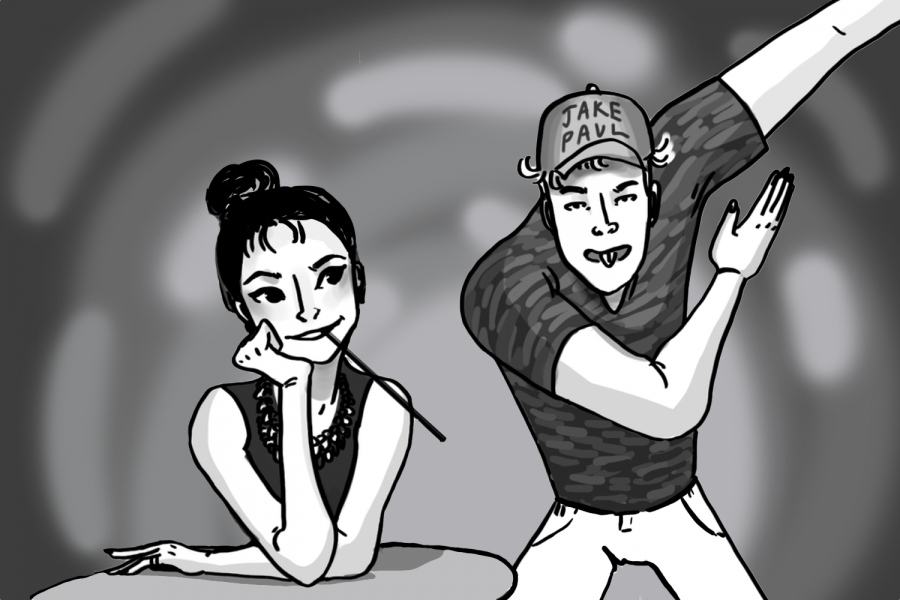Social Media Stars: The Dangers of Following False Idols
October 24, 2017
For decades now, fame has been a relatively difficult goal to achieve. However, with the recent influx in the popularity of social media, it has become less of a matter of how hard you work, and more about who can produce the most dramatic content. As a result, we can easily add social media stars to the list of people who largely don’t deserve the attention they receive.
Those who typically occupy the largest spotlights on social media today get there by creating scandal, exploiting themselves and others in order to attract more followers. Instead of Audrey Hepburn posters on their walls, young kids now idolize social media stars such as former Viners-turned Youtube personalities Jake Paul or Lele Pons, who have been involved in a series of highly publicized feuds.
Jake Paul, for instance, broke up with his ex-girlfriend Alissa Violet and forced her out of his house. She later admitted that he had been verbally and physically abusive to her for years and had cheated on her countless times. By exploiting their personal issues, these public figures have increased their subscriber count by the millions. Both parties are using the attention they receive from creating scandals out of personal issues to propel personal fame.
Creating material by sitting behind the camera can be desensitizing, removing creators from social pressures and facilitating the production of juvenile content. Many social media stars are supported by a teenage fan base that encourages their crude behavior. For instance, Jake Paul and Team Ten, Paul’s group of digital stars that releases content featuring each other, accused Alissa’s new boyfriend of physical assault with little to no evidence. Paul retreated once additional information that refuted his claims surfaced, and the issue didn’t reach court.
Juvenile content of this kind can severely affect younger audiences by demonstrating how popularity can stem from bad behavior. What young social media stars forget is that their uncorrected mistakes and wrongful actions don’t just dissolve — their audience learns to exemplify them. Hurtful pranks and intentional stereotyping are a norm in social media culture, but it would be a mistake to allow them to leak into American culture and influence children.
Consequently, new viewers — like young children — may stumble upon media that negatively affects the way they view the world. For example, watching content produced by over-sexualized social media stars such as Amanda Cerny may have a direct impact on mental health regarding body image and anxiety.
But social media can also be used for good. For example, people can start campaigns to raise awareness on world issues — look to Casey Neistat, who raised $2.6 million for Hurricane Harvey relief. By using these platforms to attract specific and dedicated audiences, social media stars can raise a significant amount of money for a good cause.
It may be fun to watch stars stirring up drama, but it can translate into destructive norms for audiences. Although regularly watching social media stars online may grab viewers’ admiration, they should keep in mind that following someone online doesn’t mean that they should follow their ways.





